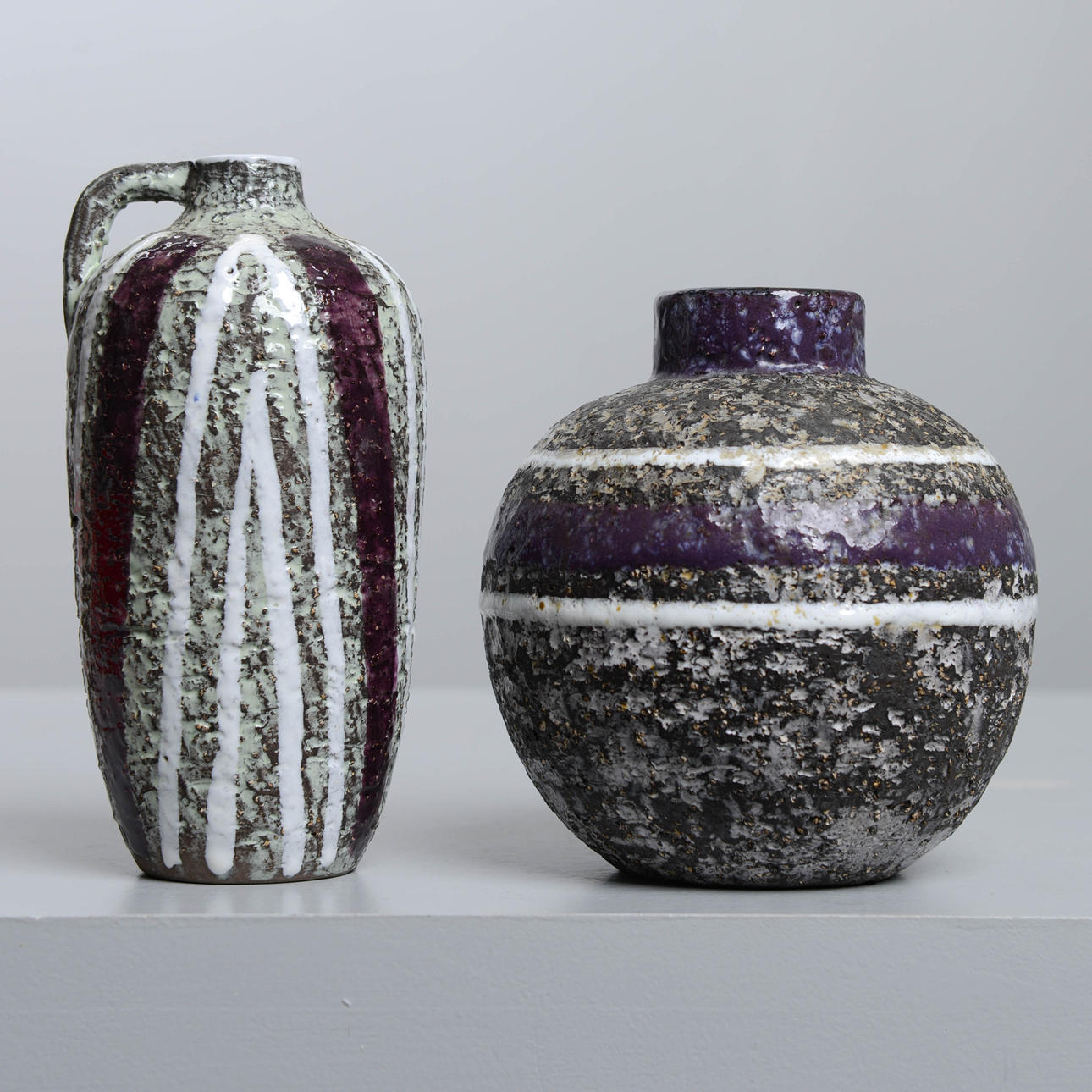
INGRID ATTERBERG. “Progresso”, 2 parts, Upsala-Ekeby, 1958-59.
This auction is closed, but maybe you like the following items?





Description
Chamotted goods. Models 2358 and 3030/546 (manufactured for Åhlén & Holm). Height 13-16 cm.
Background: One of the designers at Upsala-Ekeby who was closest to clay, the material, was Ingrid Atterberg (1920-2008). She experimented from the very beginning, like the schooled ceramist she was, with clays, glazes, and techniques. For example, she revived black clay, a mixture of red clay and manganese oxide, and made it an impactful feature in many art series, not only her own; she also produced a series, Sintergods, which succeeded in producing stoneware effects from the Uppland clay; she also found a way to use the effects of chamotte clay without having to twist it.
But Ingrid Atterberg would not have taken the place as one of the greats of Swedish ceramics, if she had not managed to reconcile her feeling for the clay with a style-proof modernist compass. Especially during the 1950s this manifested itself, with series such as Pepita, Domino, Pylon, Short series, Tricorn, Chamotte, Spira and others. She left the factory in 1964, for other design assignments. By then, she had been there for 20 years. Eventually she resumed ceramics in her own studio in Uppsala, where she continued her diligent experimentation with clay and glazes, but with a radically different ware as a result.
Condition
Minor wear and tear.
Resale right
Artist/designer
Do you have something similar to sell? Get your items valued free of charge!
Bidding
Have your item valued free of charge.
Bid history
| 2 | 4 Apr, 12:58 | 37 EUR |
| The reserve price of 37 EUR was met. | ||
| 2 | 4 Apr, 12:40 | 32 EUR |
| 1 | 3 Apr, 16:01 | 28 EUR |
Description
Chamotted goods. Models 2358 and 3030/546 (manufactured for Åhlén & Holm). Height 13-16 cm.
Background: One of the designers at Upsala-Ekeby who was closest to clay, the material, was Ingrid Atterberg (1920-2008). She experimented from the very beginning, like the schooled ceramist she was, with clays, glazes, and techniques. For example, she revived black clay, a mixture of red clay and manganese oxide, and made it an impactful feature in many art series, not only her own; she also produced a series, Sintergods, which succeeded in producing stoneware effects from the Uppland clay; she also found a way to use the effects of chamotte clay without having to twist it.
But Ingrid Atterberg would not have taken the place as one of the greats of Swedish ceramics, if she had not managed to reconcile her feeling for the clay with a style-proof modernist compass. Especially during the 1950s this manifested itself, with series such as Pepita, Domino, Pylon, Short series, Tricorn, Chamotte, Spira and others. She left the factory in 1964, for other design assignments. By then, she had been there for 20 years. Eventually she resumed ceramics in her own studio in Uppsala, where she continued her diligent experimentation with clay and glazes, but with a radically different ware as a result.
Condition
Minor wear and tear.
Resale right
Artist/designer
Do you have something similar to sell? Get your items valued free of charge!
Payment options for this item
Payment cards
Delivery
: Provide your locationInfo temporarily unavailableLoading…Provide your location to see transport options and prices.
Oops! Something went wrong.
Please try again in a moment. If it still doesn't work, contact support.
Details
- House
- Formstad Auktioner














